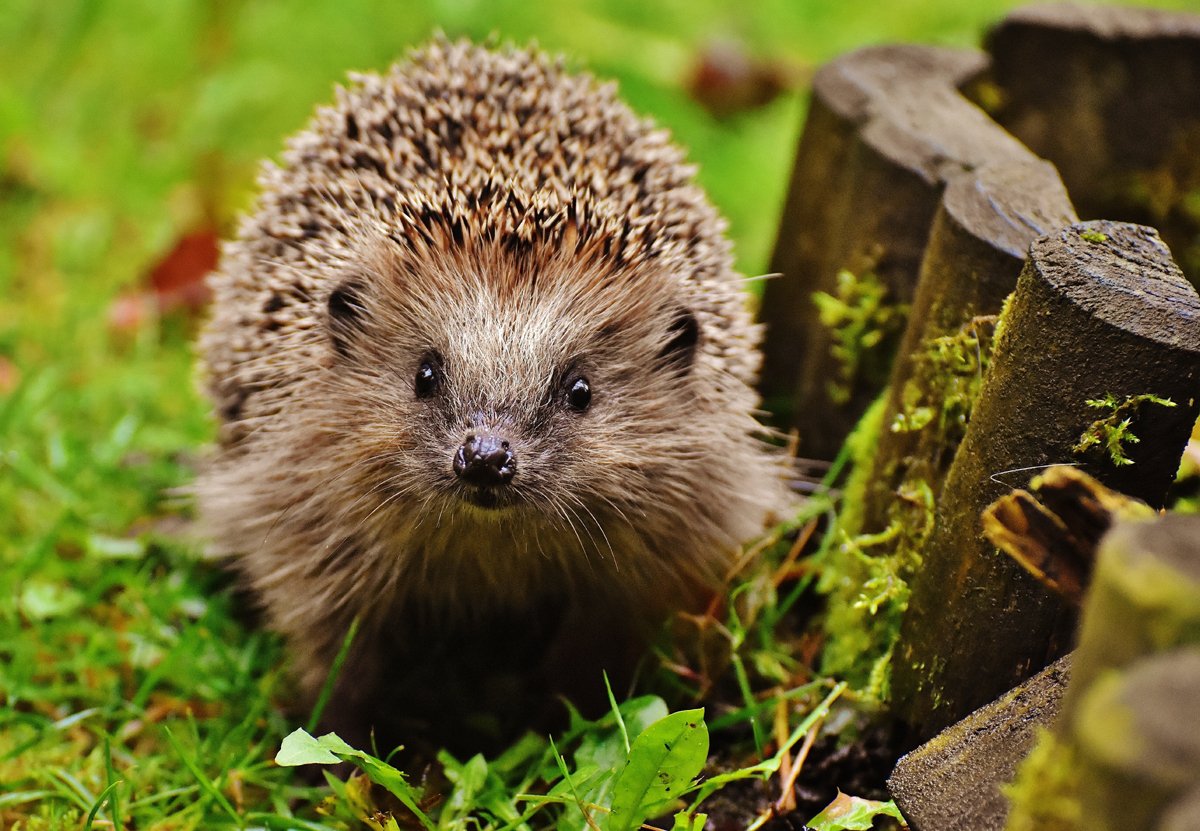
As nature starts to beckon in the spring, my thoughts turn to welcoming some prickly visitors. Each year I’m hopeful that I might see the return of hedgehogs on my little patch as they awake from hibernation.
Sadly, the hedgehog population is in serious decline in the UK. The State of Britain’s Hedgehogs 2018 report found that over the last 15 years hedgehog numbers had fallen by up to 30 per cent in urban areas, and by up to 50 per cent in rural areas. Last year saw their inclusion in the first official Red List for British Mammals, where they are classified as “vulnerable” to extinction.
These are alarming indications, but hedgehogs have shown that they are adaptable and can be successful in urban environments if given a little help. I don’t claim to be an expert,but I’ll share the approach I’ve taken in my own garden to cater for these delightful creatures, along with some practical tips, and pointers to further information.
Health & Safety for hedgehogs
There are no forms to fill in for this bit, just some common sense! Being a wildlife-friendly gardener and avoiding pesticides ‒ particularly slug pellets ‒ is a good place to start, as it encourages biodiversity and prevents toxins entering the food chain. Leaving a corner to go wild or building a log or leaf pile creates ideal conditions for the beetles and other invertebrates that hedgehogs like to feast on. When you’re tidying up your plot, please check in any long grass or overgrown areas before plunging in with a strimmer or other tools. Hedgehogs usually stay put and curl into a ball if they sense a threat, so it’s best to be careful in case one is nesting in the undergrowth; their nests look like a knot of grass or leaves and they may even bed down in compost heaps.
Also, take a look around your garden for hedgehog hazards. They love snuffling around the margins seeking out their favourite foods under bushes, hedges, sheds, etc. Check for netting or wire that might entangle animals, drains or crevices where they might become stuck or sharp items that could cause injury. Of course, some gaps and holes where they can access your garden are essential. Habitat fragmentation is one of the hedgehog’s biggest threats, so if you and your neighbours can agree to make hog-sized holes in the bottom of adjoining fences and walls, this allows hogs to roam more freely. The whole street could get involved and you can affix signs near the holes to show they should be left open. Finally, hedgehogs are surprisingly good swimmers and climbers, but if you have a pond or pool, please ensure that it has a gently sloping bank, or a ramp or stones, so that overly adventurous hogs and other small mammals can easily clamber out to dry land.
Taking it to the next level
There are other things you can do to make your garden more inviting for hogs. You could buy, or make, a hedgehog house and you’ll find plenty of options and advice on the web.
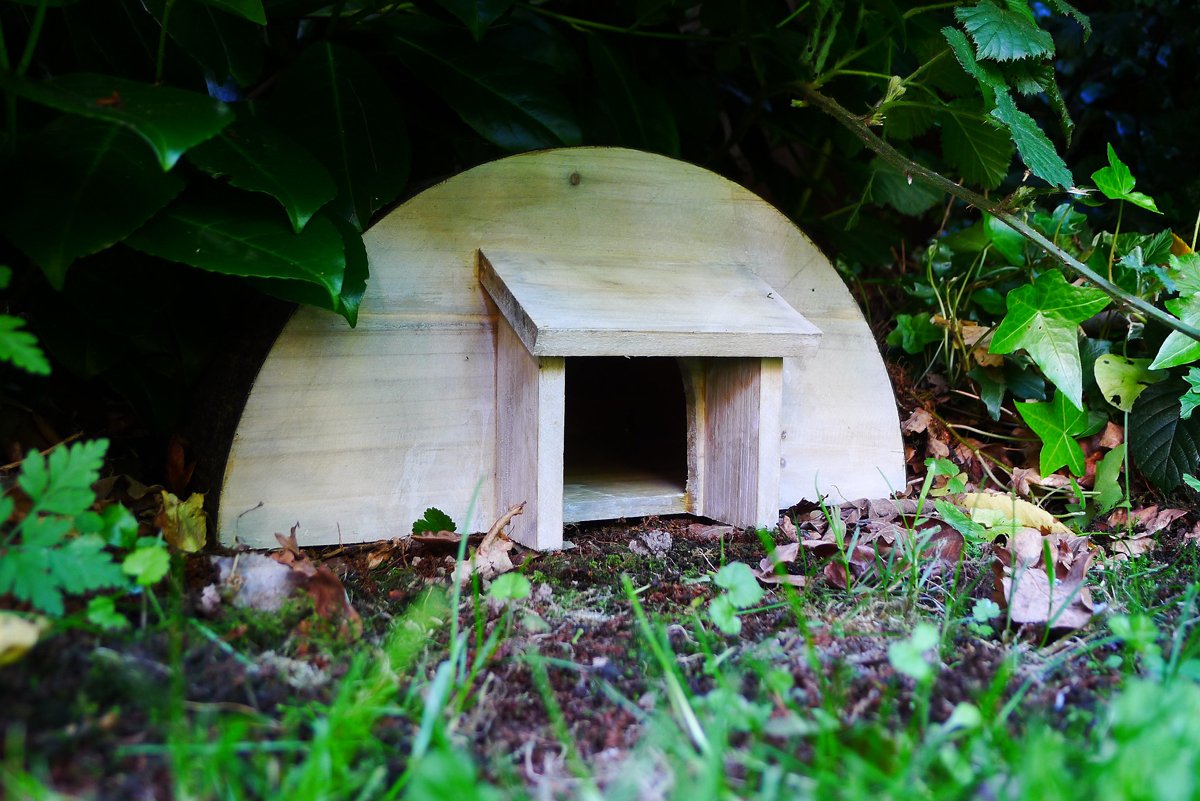
Wood is the best material for year-round use, in my opinion, as plastic can be cold and attracts condensation. The British Hedgehog Preservation Society has information about hedgehog homes, including positioning and care, and BBC Gardeners’ World recommend some ready-made hedgehog houses. Site the house in a quiet, undisturbed spot and, if you’re lucky, a hog might take up residence. Hedgehogs travel up to two miles each night in search of food and often have several nests around their territory, so they may not use the same one each time.
If you’re prepared to put in a little more effort, you could try putting food out. Ideally you don’t want to feed the neighbourhood cats, so I’d advise using a feeding box or station. Again, you could buy one, but I made mine from a lidded under-bed plastic storage box. Here’s how:- choose a box long enough to keep the food out of easy reach of cats or foxes – the dimensions of my box are 58cm(L)x38cm(W)x18cm(H). Take a marker and a sharp knife and cut a 13cm x 13cm hole in one of the short sides of the box (wear protective gloves and safety glasses). Cover any sharp cut edges around the hole with heavy-duty tape. Then line the bottom of the box with newspaper, put some hedgehog food in a bowl at the end away from the entrance hole, clip the box lid on and add a brick or other weight on top ‒ now you have a hedgehog feeding station!
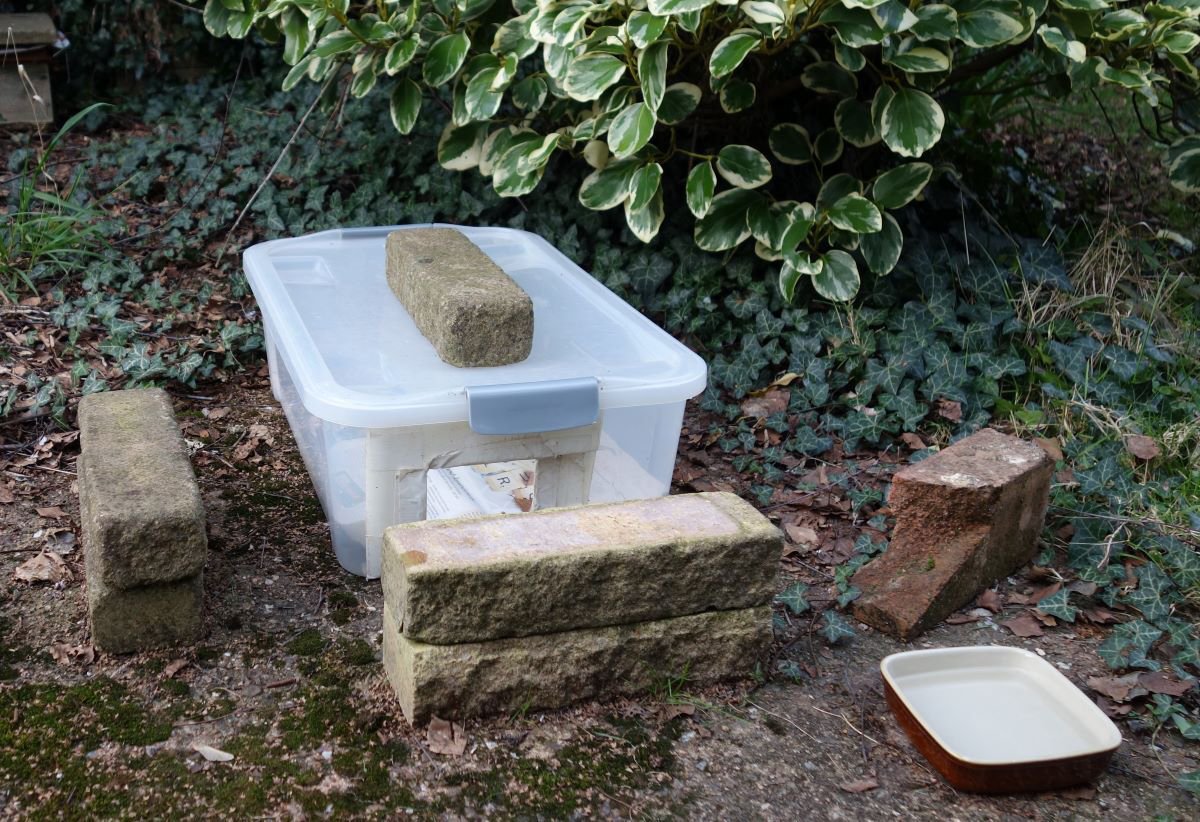
To prevent cats getting their paws inside the box to fish out the food, it’s good to place an obstruction in front of the hole, leaving a hedgehog-sized gap, or have the entrance facing a wall. Putting bricks in front of the entrance has worked for me (see photo); others suggest adding a tunnel to the entrance, or a baffle wall inside the box to deter more persistent thieves! There are many different designs and set-ups for hedgehog feeding stations – see here and here for some examples.
I take my feeding box outside just before dusk, or a bit earlier as the nights get shorter, and retrieve it in the morning. You could just leave food out for a few hours if you prefer. Then it’s time to remove any slugs (yuck!), clean the bowls every day and replace the newspaper lining twice a week, or as needed. In spring I start off with a small amount of dry food until there is evidence that some hogs have emerged. This year my first visitors were at the end of February, which was earlier than I’d expect, probably due to the unusually mild weather.
To complete my set-up, I purchased a £40 trail cam suitable for night photography, so that I can observe the comings and goings unobtrusively. If the camera has a video option this gives more insight into hedgehog behaviour and you may be able to start recognising individuals. It’s a joy to watch the critters I’m feeding! You can see one of the static images from my trail cam below:
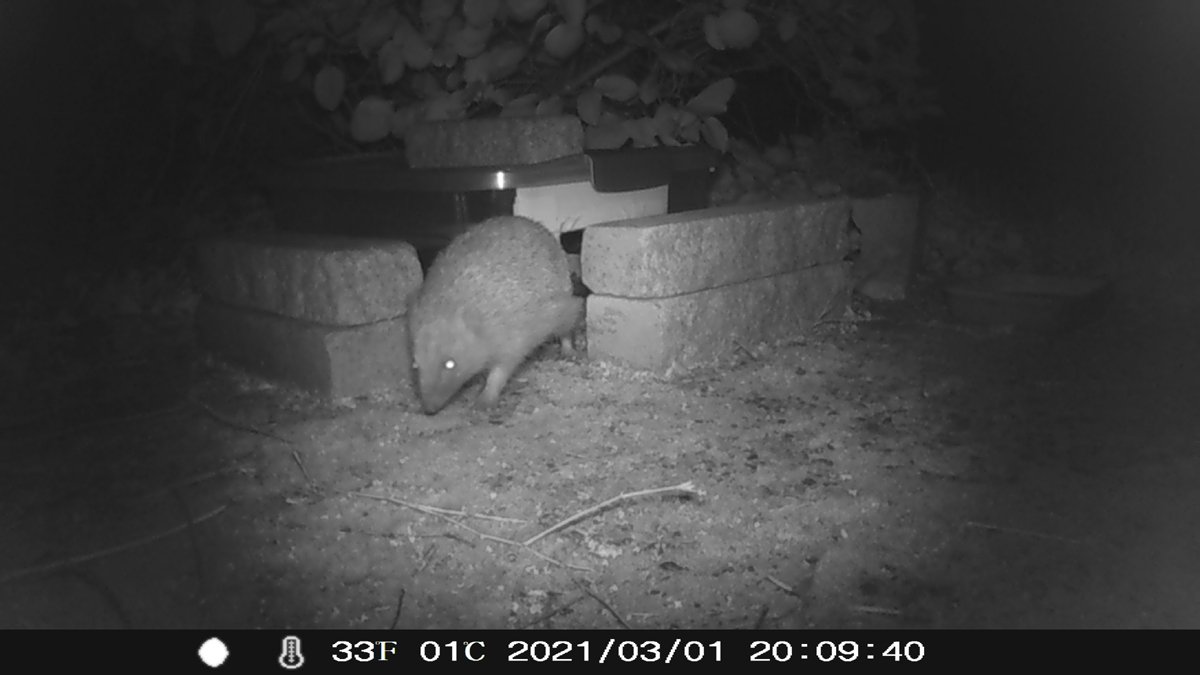
What’s on the menu?
The first step is to provide some fresh water; outside the feeding box I leave a shallow ceramic bowl that won’t tip over. Sometimes the water will remain untouched, but it is important if you are offering dry food and it can be a life-saver in hot, dry weather. Please don’t leave milk out for hedgehogs because it upsets their digestive system. Apart from unweaned baby hoglets, who need specialist feeding and preferably their mother’s milk, all that hedgehogs need to drink is water.
In terms of solid food, hedgehog organisations recommend the following: either reputable brands of hedgehog food, or cat or dog food as an acceptable alternative, ie meat-based wet cat or dog foods and dry cat foods (dairy-free kibbles). I like to offer a bowl of dry and a bowl of wet food, although I’ll reduce to one bowl if food is being left. For the dry food I get a crunchy hedgehog food: one of the varieties available in pet shops and garden centres. For wet food I buy simple meat-in-jelly cat food (not gravy) and stay away from fish flavours. I use bowls suitable for smaller animals and find that a 400g can gives about five servings.
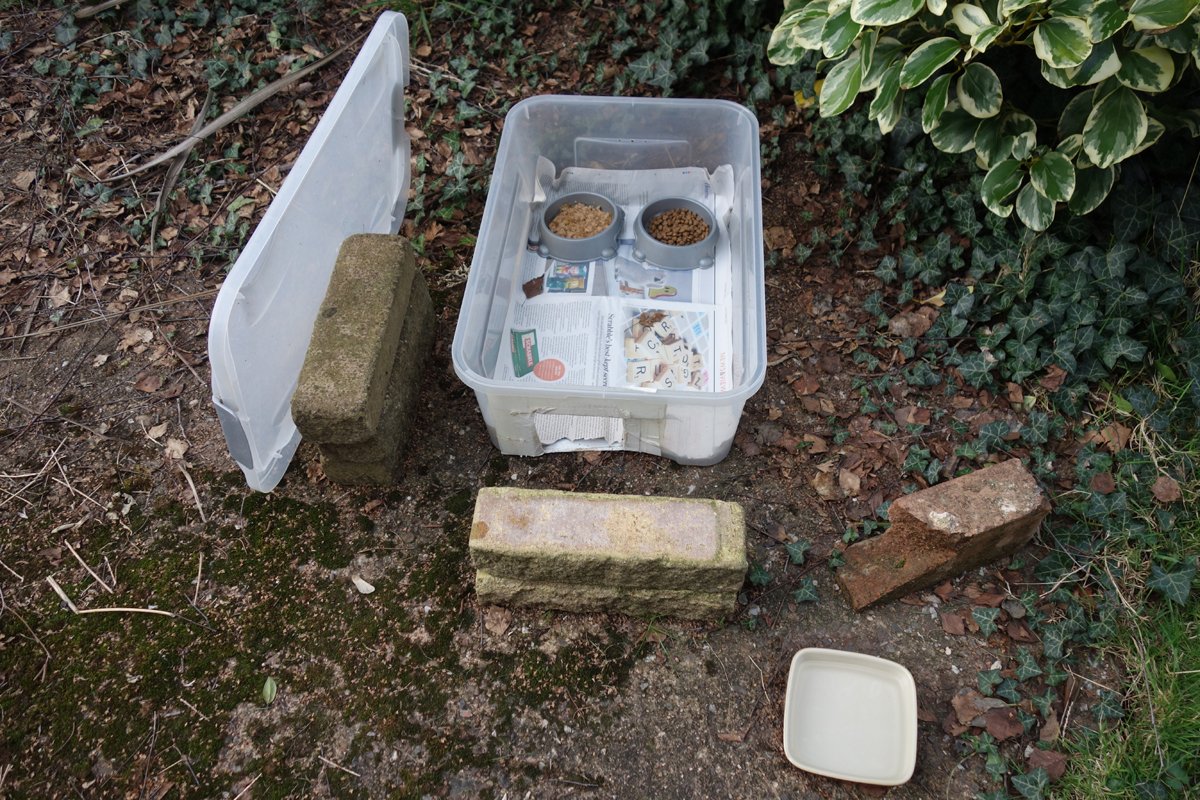
As a word of warning, certain foodstuffs that are high in phosphorous and low in calcium are bad for hedgehogs: these include mealworms, sunflower hearts and peanuts. Although hedgehogs may gobble up these ‘treats’, the dietary imbalance can lead to metabolic bone disease (MBD), as explained here and here.
Bear in mind that the food you put out should only supplement a wild hedgehog’s natural diet – not replace it. The bulk of a healthy hog ‘menu’ should consist of beetles and larvae, caterpillars, earthworms, millipedes and earwigs, and they will also eat eggs and carrion if they find them. Slugs and snails are not their favourite choice so these are usually a last resort (sorry gardeners!). Foraging for different foods provides a balanced diet for a hedgehog, with the nutrition and roughage they need. However, any additional food you supply will give them extra energy when their natural sources are low, and will also help boost their weight before they hibernate for winter.
Further information on what hedgehogs eat can be found here and also from the Woodland Trust here, whilst Wildlife Online has a detailed article about feeding behaviour and diet.
Protecting the species
I feel privileged to have hedgehogs visiting my urban garden in Exeter and I hope I’m making a small contribution to supporting the local population. Even if you don’t have a garden or there don’t appear to be any hedgehogs where you live, there are still ways you can help. You could join or volunteer for one of the national or local conservation and campaign groups that are working hard to highlight the hedgehog’s plight.
The British Hedgehog Preservation Society (BHPS) is the main national organisation dedicated to hedgehogs and it has connections to local groups and rescue centres. If you spot a hedgehog that could be in trouble, contact BHPS for advice and they can put you in touch with a local carer if necessary. BHPS and People’s Trust for Endangered Species jointly launched the Hedgehog Street campaign: follow the links to their websites for a wealth of authoritative information, plus you can chat with other hedgehog fans or sign up to become a Hedgehog Champion.
Other organisations have a broader remit covering the conservation of native British wildlife and habitats ‒ such as The Mammal Society, the People’s Trust for Endangered Species (PTES), The Wildlife and Woodland Trusts, and CPRE, the countryside charity. Locally, Devon Wildlife Trust does fantastic work and you can become a member, or donate to their ‘adopt-a-hedgehog’ scheme.
Lastly, here’s something everyone can do – please sign the petition to government, to add the hedgehog to the list of protected animals under the Wildlife and Countryside Act. The petition has already reached the target to trigger a debate in Parliament, but every signature counts!





